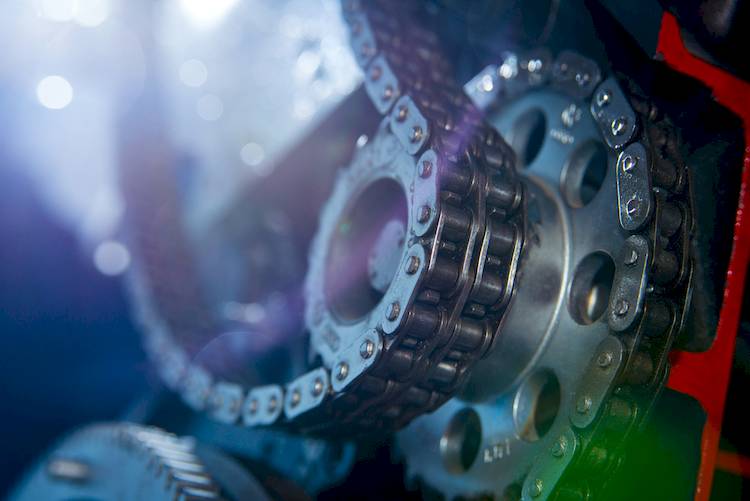

A timing chain is a metal chain, as opposed to the timing belt which is made of rubber. The chain is located inside of the engine and needs to be lubricated by the oil in the engine so everything runs together. Every time you use the engine, the timing chain will be used. It connects the crankshaft to the camshaft. The metal links in the chain move on the tooth sprockets on the end of the crankshaft and crankshaft so that they rotate together.
The timing chain normally needs to be replaced between 40,000 and 100,000 miles unless there is a problem. Issues with the chain are pretty common in high mileage vehicles, so if you are driving an older vehicle, or one with a lot of miles, it is best to be on the lookout for symptoms of the timing chain going bad or failing. If you do start noticing problems, or your vehicle, contact a certified mechanic to have your timing chain replaced.
Over time, the timing chain wears out because it stretches. Furthermore, the chain tensioner or the guides that are connected to the timing chain may wear out as well, causing the timing chain to fail completely. If the chain fails, the vehicle will not run at all. One cause of the timing chain wearing out faster, is using the wrong oil. Most of the time, modern vehicles will only be able to use synthetic oil because they have to meet certain specifications to ensure the oil flows quickly, and with the proper pressure. The wrong oil can cause extra load on the chain and the engine will not be properly lubricated.
Since the timing chain can go bad and will need to be replaced, it is important to be able to recognize the symptoms so you can have it repaired before it fails completely.
Signs your timing chain needs to be replaced include:
Your vehicle has a rough idle, meaning your engine shakes
Your car backfires
The vehicle seems to be working harder than normal
Your car will not start at all, indicated a complete timing chain failure



